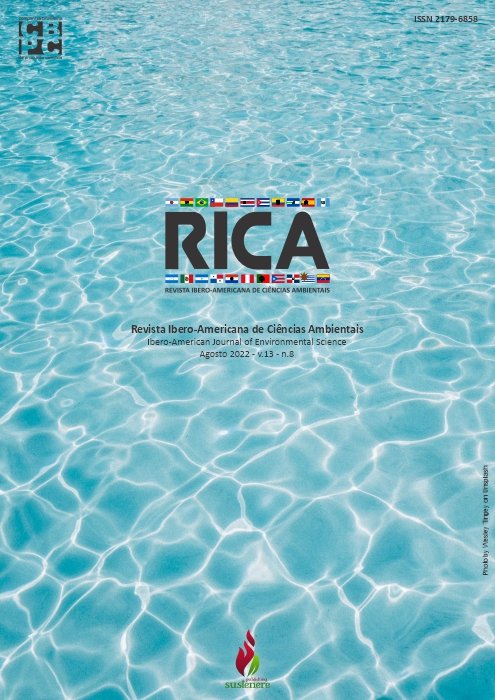Characterization of coffee grounds for the treatment of effluents from chemical laboratories
DOI:
https://doi.org/10.6008/CBPC2179-6858.2022.008.0012Keywords:
Biosorption, Biomass, Parameters, Potentially toxic metalsAbstract
Chemistry laboratories at higher education institutions generate a variety of waste. These contain Potentially Toxic Metals, whose, in high concentrations and in the form of cations, can cause environmental damage. The use of biosorbents in the biosorption process has been suggested to satisfy the need to remove metal ions from wastewater, promoting the decontamination of effluents. Considering that Brazil is one of the largest coffee consumers in the world, it consequently generates an amount of waste. These, because they have cellulose, hemicellulose and lignin molecules in their composition, make them an excellent candidate for the group of natural adsorbents. This research aims to characterize Lavada Coffee grounds, modified with potassium hydroxide (KOH) and phosphoric acid (H3PO4) for a possible application in the treatment of chemical laboratory effluents. The pH in H2O in KCl was determined by the method of Raij et., (2001), which consisted of weighing 5 g of the washed and modified biomass separately, placed in 250 ml erlenmeyers and adding 20 ml of distilled water and 0.1 KCl mol L-1 separately and subjected to stirring for 40 minutes followed by filtration. Then, pH measurements were taken on the samples. PCZ determination consisted of mixing 50 mg of biomass with 50 mL of aqueous solution under heating, followed by filtration. Subsequently, the pH of the solutions was adjusted to different initial pH conditions (1, 2, 3, 4, 5, 6, 8, 9, 10, 11 and 12) and the pH was determined after 24 hours of equilibrium (REGABULTO et al., 2004). Infrared spectrometry was performed at the Optical and Photothermal Spectroscopy Laboratory (LEOF) at the Federal University of Maranhão (UFMA) using a Bruker FTIR spectrometer, model Vertex 70v. For the analysis of the samples, 2 mg of powder was used, so that together with the KBr they form a 200 mg tablet. The results showed that the studied biomasses have negative charges on their surface, preferentially adsorbing cations. With the FITR it was possible to predict the functional groups present in the biomasses, which are fundamental for the biosorption process. The results obtained showed that the Coffee Grounds Washed and modified with KOH and H3PO4 showed favorable characteristics to be good natural adsorbents, being, therefore, necessary to carry out the experiments with the biosorption assay to evaluate the ability to remove the biomass under study in laboratory effluents.
Downloads
Downloads
Published
Issue
Section
License
Copyright (c) 2023 Ibero-American Journal of Environmental Sciences

This work is licensed under a Creative Commons Attribution-NonCommercial-NoDerivatives 4.0 International License.
The CBPC - Companhia Brasileira de Produção Científica (Brazil CNPJ: 11.221.422/0001-03) the material rights of the published works. The rights relate to the publication of the work anywhere in the world, including rights to renewals, expansions and dissemination of the contribution, as well as other subsidiary rights. All electronically published works may subsequently be published in printed collections under the coordination of this company and / or its partners. The authors preserve the copyright, but are not allowed to publish the contribution in another medium, printed or digital, in Portuguese or in translation.









